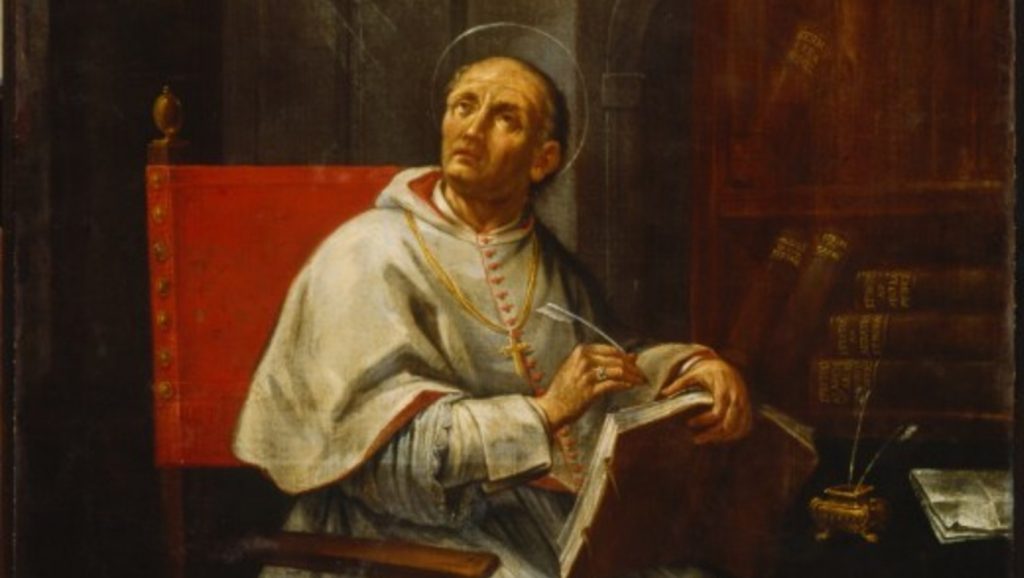St. Peter Damian was born in 1007 in Ravenna, Italy. He had a large family, but his mother and father died while he was still young. Peter’s older brother took him in, but treated him poorly, until another brother, a priest, stepped in and provided Peter with an education and a new surname, Damian.
Peter excelled in school. He began taking up sacrifices — wearing a hair shirt, fasting, spending long hours reciting the Psalms — and eventually embraced voluntary poverty in the Order of St. Benedict. Peter joined a group of monks in a hermitage at Fonte Avellana, where they lived out their devotion to the Cross through lives of rigorous fasting and physical mortification. They also prayed all 150 Psalms daily.
Peter became known for his skill as a preacher, and leaders of other monasteries sought his help and advice in inspiring holiness in their own monks. In 1043, he became the prior of Fonte Avellana, and established five other hermitages.
The Church was under fire from serious corruption at the time. Many of the clergy were immoral, and there was a widespread practice of selling religious offices. Peter wrote tirelessly on the subject, calling the clergy and religious to live out their commitments to holiness.
In 1057, Pope Stephen IX made Peter a bishop, only by threatening to excommunicate him if he disobeyed. As Bishop of Ostia, Peter joined the College of Cardinals and wrote a letter to encourage the other cardinals to set an example for the Church.
After Pope Stephen died the following year, Peter supported Pope Nicholas II against a rival claim to the papacy, and represented the pope in Milan during a crisis over canonical and moral issues. Although Peter wished to remove himself from the center of these issues, Nicholas’ death in 1061 sparked another succession crisis, and he helped resolve this in favor of Pope Alexander II. Peter was then occupied with negotiations and travel for the next six years.
In 1067, Peter was allowed to resign his episcopate, and he returned to his monastery at Fonte Avellana. He was called back to help prevent German King Henry IV from divorcing his wife, and then made a pilgrimage to Monte Cassino, where the Benedictine order was born.
In 1072, Peter returned to Ravenna to bring the local church back in line with the pope. On his return trip, he fell ill, and died after spending a week at a Benedictine monastery in Faenza.
St. Peter Damien was named a Doctor of the Church in 1823 by Pope Leo XII.

